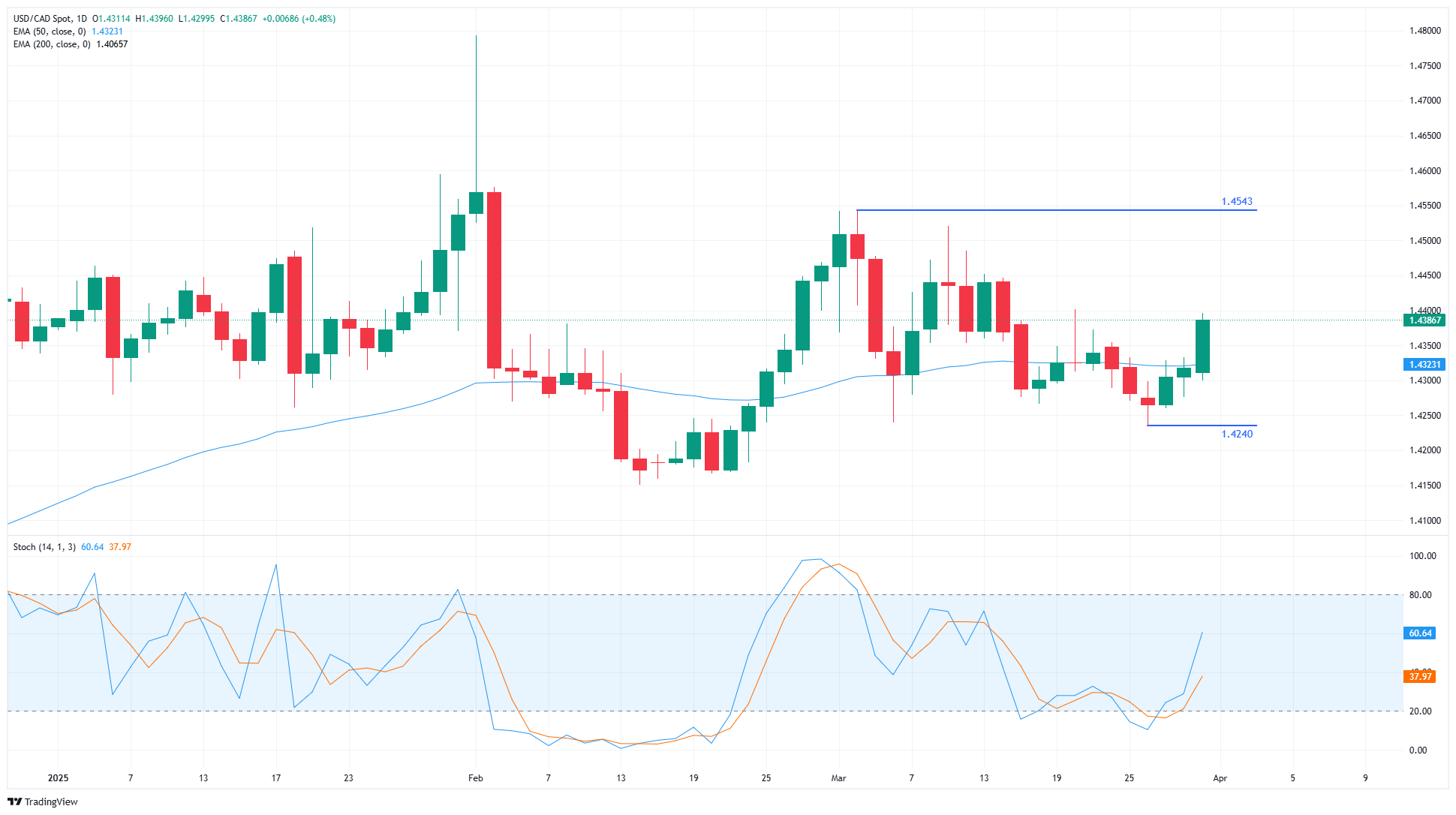Canadian Dollar extends declines as tariff pressures weigh on Loonie markets
- The Canadian Dollar backslid 0.5% against the Greenback on Monday.
- Loonie markets are coiling ahead of the Trump administration’s self-imposed tariff day on April 2.
- Key labor figures from both Canada and the US are due later this week.
The Canadian Dollar (CAD) headed lower on Monday, kicking off the new trading week by shedding half of a percent against the US Dollar (USD) as the Trump administration’s April 2 deadline for sweeping tariffs looms ahead. The Loonie has accelerated its weak positioning, losing ground for a third straight trading day.
The Trump team still intends to carry through with a wide swath of targeted and “reciprocal” tariffs on April 2, which will include retaliatory tariffs on any country that has its own import restrictions on US goods, as well as targeted sector tariffs on automobiles, as well as Canadian goods and materials from the European Union.
Daily digest market movers: Markets jostle for position ahead of tariff deadline
- The Canadian Dollar slipped on Monday, falling 0.5% against the Greenback as market flow jitters underpin positioning.
- Tariff concerns are quickly taking center stage, crimping investor sentiment.
- The Trump administration is poised to kick in several tariff packages, many of which will be cumulative and drastically impact both US consumers and US trading partners.
- Key labor data is due at the end of the week from both Canada and the US.
- Canadian labor figures and US Nonfarm Payrolls (NFP) prints this week will serve as “bellwether” datapoints for pre- and post-tariff analysis.
Canadian Dollar price forecast: Loonie extends backslide as tariffs loom
The Canadian Dollar lost further ground to kick off the new trading week, falling against the US Dollar and kicking the USD/CAD chart back toward the 1.4400 handle. Despite the Loonie’s fresh-found weakness in the face of tariff pressures, USD/CAD remains in incredibly familiar territory.
USD/CAD has cycled within a choppy range for nearly four months. The Loonie remains trapped in congestion against the Greenback, and even near-term choppiness from geopolitical factors leaves USD/CAD in an environment where technical patterns still lend themselves to trading consolidation patterns.
USD/CAD daily chart
Canadian Dollar FAQs
The key factors driving the Canadian Dollar (CAD) are the level of interest rates set by the Bank of Canada (BoC), the price of Oil, Canada’s largest export, the health of its economy, inflation and the Trade Balance, which is the difference between the value of Canada’s exports versus its imports. Other factors include market sentiment – whether investors are taking on more risky assets (risk-on) or seeking safe-havens (risk-off) – with risk-on being CAD-positive. As its largest trading partner, the health of the US economy is also a key factor influencing the Canadian Dollar.
The Bank of Canada (BoC) has a significant influence on the Canadian Dollar by setting the level of interest rates that banks can lend to one another. This influences the level of interest rates for everyone. The main goal of the BoC is to maintain inflation at 1-3% by adjusting interest rates up or down. Relatively higher interest rates tend to be positive for the CAD. The Bank of Canada can also use quantitative easing and tightening to influence credit conditions, with the former CAD-negative and the latter CAD-positive.
The price of Oil is a key factor impacting the value of the Canadian Dollar. Petroleum is Canada’s biggest export, so Oil price tends to have an immediate impact on the CAD value. Generally, if Oil price rises CAD also goes up, as aggregate demand for the currency increases. The opposite is the case if the price of Oil falls. Higher Oil prices also tend to result in a greater likelihood of a positive Trade Balance, which is also supportive of the CAD.
While inflation had always traditionally been thought of as a negative factor for a currency since it lowers the value of money, the opposite has actually been the case in modern times with the relaxation of cross-border capital controls. Higher inflation tends to lead central banks to put up interest rates which attracts more capital inflows from global investors seeking a lucrative place to keep their money. This increases demand for the local currency, which in Canada’s case is the Canadian Dollar.
Macroeconomic data releases gauge the health of the economy and can have an impact on the Canadian Dollar. Indicators such as GDP, Manufacturing and Services PMIs, employment, and consumer sentiment surveys can all influence the direction of the CAD. A strong economy is good for the Canadian Dollar. Not only does it attract more foreign investment but it may encourage the Bank of Canada to put up interest rates, leading to a stronger currency. If economic data is weak, however, the CAD is likely to fall.

